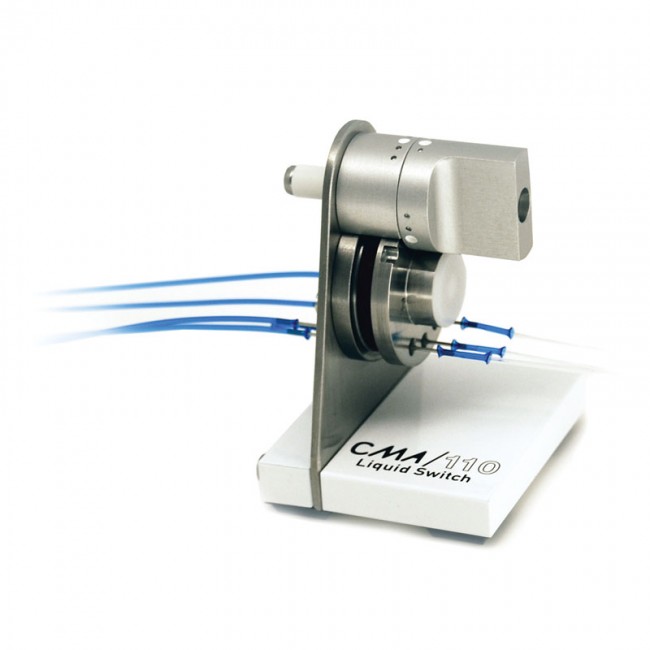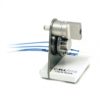CMA 110 Liquid Switch
The CMA 110 Liquid Switch permits manual switching between up to three perfusion lines (syringes) and a microdialysis probe. This makes it possible to change different solutions instantaneously without any risk of introducing air bubbles into the microdialysis probe.
Product Enquiry
If you would like to send us an enquiry about this product, please click the button below, fill in the form and submit.
Product EnquiryCMA 110 Liquid Switch
The CMA 110 Liquid Switch permits manual switching between up to three perfusion lines (syringes) and a microdialysis probe. This makes it possible to change different solutions instantaneously without any risk of introducing air bubbles into the microdialysis probe.
- Instantly switch between syringes
- No interruption of flow
- Prevent introduction of air bubble
Ordering information
| Product Name | Item # |
| CMA 110 Liquid Switch with Tubing Kit | CMA8308200 |
| Replacement Tubing Kit for CMA 110 Liquid Switch | CMA3408550 |
Downloads
Journal Articles
Recent Selected Publications
Cao, F., Zhang, L. & Tian, Y., 2016. A novel N-doped carbon nanotube fiber for selective and reliable electrochemical determination of ascorbic acid in rat brain microdialysates. Journal of Electroanalytical Chemistry, 781, pp.278–283.
2. Vazquez-DeRose, J. et al., 2016. Hypocretin/orexin antagonism enhances sleep-related adenosine and GABA neurotransmission in rat basal forebrain. Brain Structure and Function, 221(2), pp.923–940.
Legrand, R. et al., 2015. Dopamine release in the lateral hypothalamus is stimulated by α-MSH in both the anticipatory and consummatory phases of feeding. Psychoneuroendocrinology, 56, pp.79–87.
Wang, Z., Zhang, L. & Tian, Y., 2015. A durable non-enzymatic electrochemical sensor for monitoring H2O2 in rat brain microdialysates based on one-step fabrication of hydrogels. Analyst, 140(11), pp.3788–3793.
Sugita, T. et al., 2015. Breathing is affected by dopamine D2-like receptors in the basolateral amygdala. Respiratory Physiology & Neurobiology, 209, pp.23–27.
Sørensen, M.A. et al., 2014. Regional disturbances in blood flow and metabolism in equine limb wound healing with formation of exuberant granulation tissue. Wound Repair and Regeneration, 22(5), pp.647– 653.
Hambrecht-Wiedbusch, V.S. et al., 2014. Benzodiazepine Site Agonists Differentially Alter Acetylcholine Release in Rat Amygdala. Anesthesia and Analgesia, 118(6), pp.1293–1300.
Yu, Y. et al., 2013. Size-tunable Pt nanoparticles assembled on functionalized ordered mesoporous carbon for the simultaneous and on-line detection of glucose and L-lactate in brain microdialysate. Biosensors and Bioelectronics, 41, pp.511–518.
Di Giovanni, G. et al., 2013. In Vivo Microdialysis to Study Striatal Dopaminergic Neurodegeneration. In G. Di Giovanni et al., eds. Microdialysis Techniques in Neuroscience. Neuromethods. Humana Press, pp. 23–42. Available at: http://dx.doi.org/10.1007/978-1-62703-173-8_2.
Ristić, D. & Ellrich, J., 2012. P2X7 receptor blockade reverses purinergic facilitation of neck muscle nociception in mice. Cephalalgia, 32(7), pp.544–553.
| Size (W x D x H) | 66 x 46 x 50 mm |
| Weight | 0.13 kg |
| Internal Volume | Inlet side 1.7 μl, Outlet side 1.7 μl |




